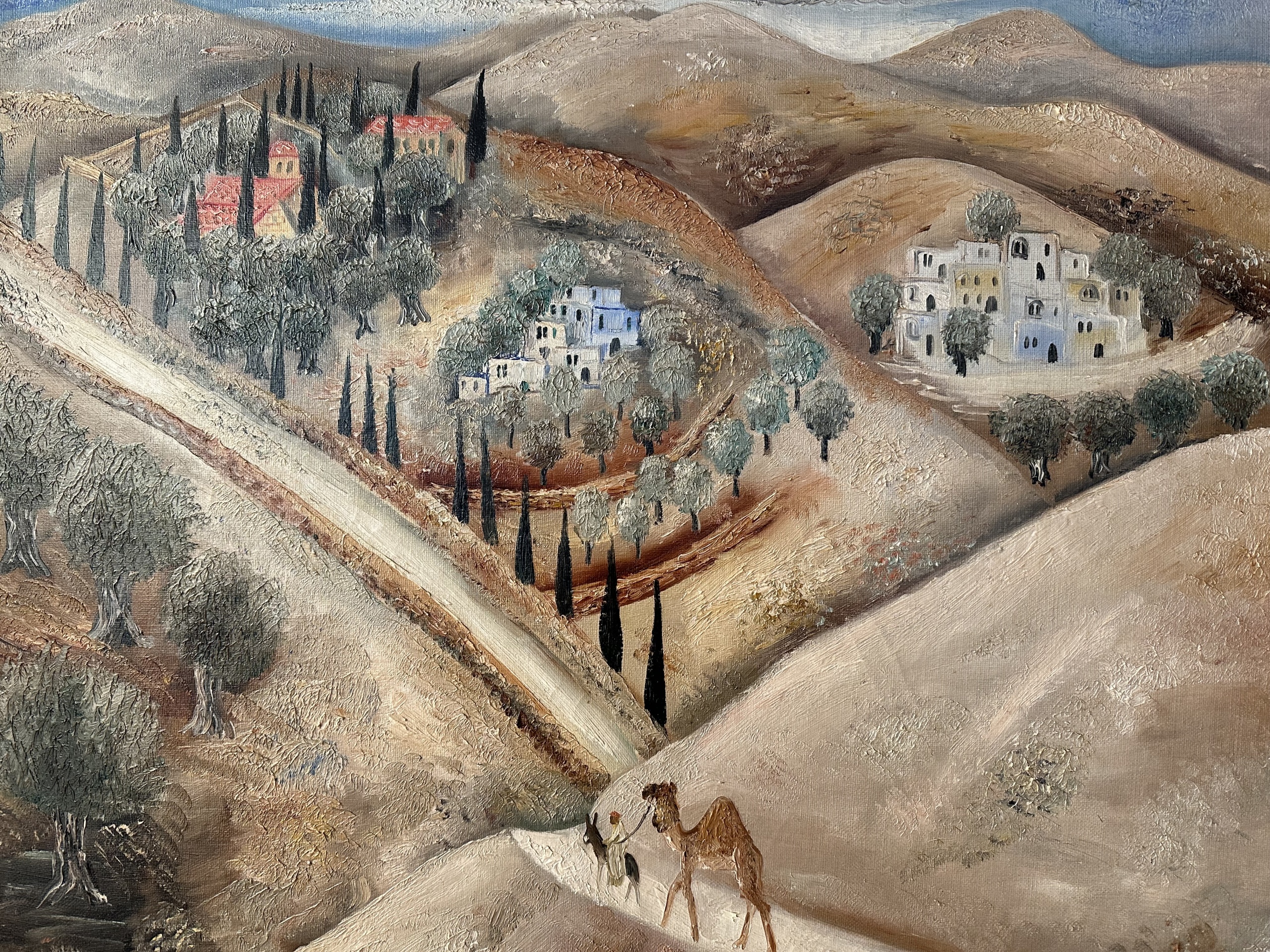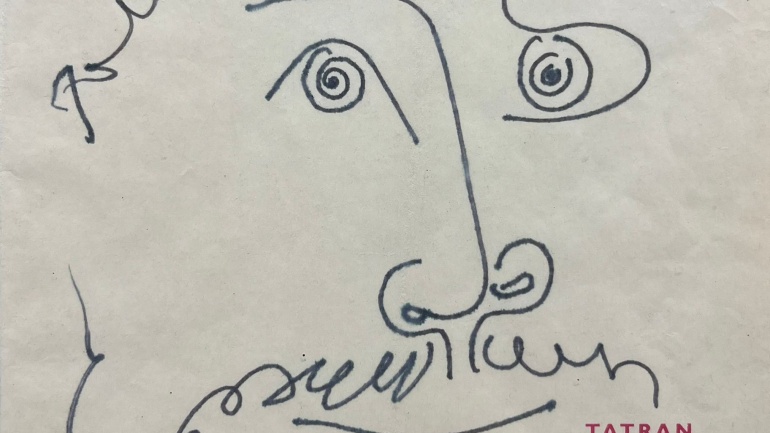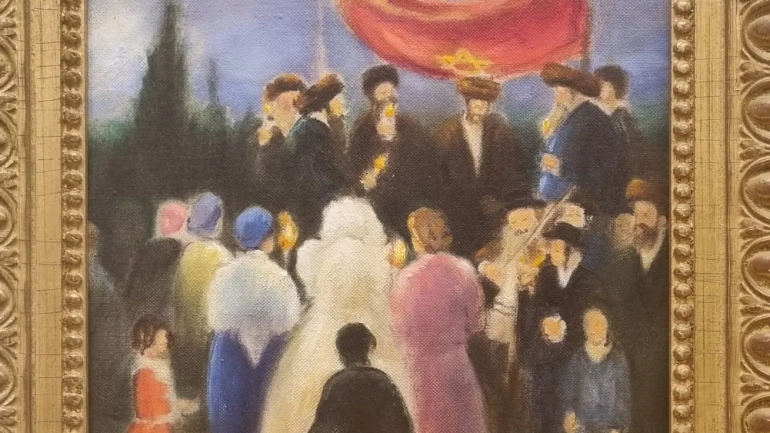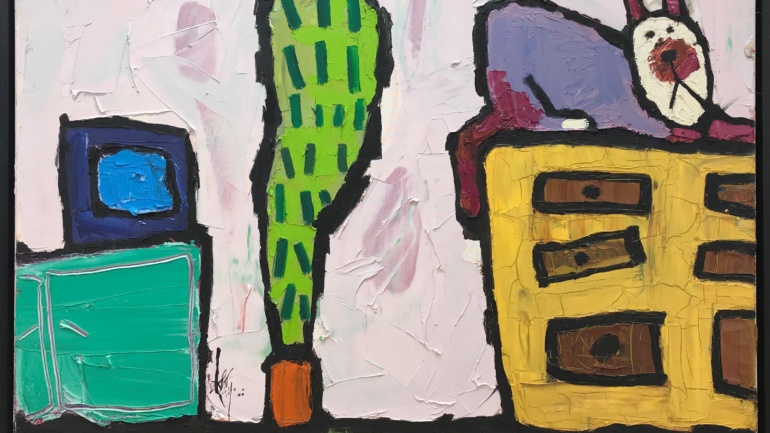Please view details of “Road to Bet-Lehem” By Reuven Rubin
Reuven Rubin‘s “Road to Bet-Lehem” transports the viewer to a sun-drenched landscape, imbued with a sense of timeless tranquility. This work captures not only the physical beauty of the road to Bethlehem but also the spirit of early Zionism, a yearning for connection to the land and a vision of a vibrant future.
Rubin’s arrival in Jaffa in 1912 marked a pivotal moment in his life and art. He famously declared that upon setting foot on the shores of what was then Ottoman Palestine, he knew he had found his home. This deep connection to the land permeates his work. “Road to Bet-Lehem” stands as a testament to his love for the Israeli landscape. He wasn’t simply painting a scene; he was capturing the very essence of a place, imbuing it with his own sense of belonging and the collective hopes of a people.
Composition
The painting’s composition draws the eye along the winding road, which stretches into the distance, leading a wanderer with a camel towards the subtle silhouette of Bethlehem. The perspective is masterful, creating a sense of depth and inviting the viewer to journey along this path. The rolling hills, bathed in a soft, translucent light, seem to breathe with life. Cypresses and ancient olive trees dot the landscape, standing like silent sentinels, witnesses to centuries of history.
Rubin’s use of color is particularly striking. Moreover, sandy hues dominate the palette, reflecting the arid landscape, while splashes of light blue, mirroring the sky, accentuate the buildings and create a sense of airy lightness. Furthermore, the houses, reflecting the sky’s azure, seem to shimmer in the heat, adding to the almost dreamlike quality of the scene. Especially, a lone merchant, riding a donkey and leading a camel, adds a touch of everyday life to the pastoral scene, grounding the painting in the reality of the time.
Artisitic period
This period in Rubin’s artistic journey is often characterized by its Cezannesque influence. Like Cézanne, Rubin explored the interplay of light and form, simplifying the landscape into its essential elements. However, Rubin’s work is infused with a unique sensibility, blending modernist techniques with a naive style that gives his paintings a distinct charm. He wasn’t simply mimicking European styles; he was adapting them to express the unique character of the Israeli landscape.
Besides, the 1920s saw a rebellion among artists against the established Bezalel school, which was perceived as too Orientalist. Rubin was at the forefront of this movement. He advocated for the integration of contemporary European artistic trends to depict the beauty of Israel. He sought to capture the spirit of the time, the energy and optimism that characterized the early Zionist movement.
Interestingly,
The name Bethlehem carries a dual meaning. In particular, in Arabic, it translates to “house of meat,” while in Hebrew – “house of bread” or “house of food.” This duality reflects the complex history and cultural significance of the city, a place sacred to multiple faiths. Rubin’s painting, however, transcends these specific interpretations, focusing instead on the universal beauty of the landscape and the enduring human connection to the land.
“Road to Bet-Lehem” is a painting that invites us to pause, to breathe in the tranquil air, and to contemplate the enduring allure of the road to Bethlehem. Also, it’s a reminder of the power of landscape to inspire, to connect, and to transport us to another time and place. You can acquire it from Kings gallery!
Kings Gallery
Kings Gallery is a leading fine art gallery established in Jerusalem in 1995. We strive to collect and sell the highest quality historic and contemporary Israeli and International art. Specifically, the gallery specializes in artists from the early period of the 1920’s. In addition, Kings Gallery features leading up-and-coming young artists who will definitely be prominent names in the next few years.





